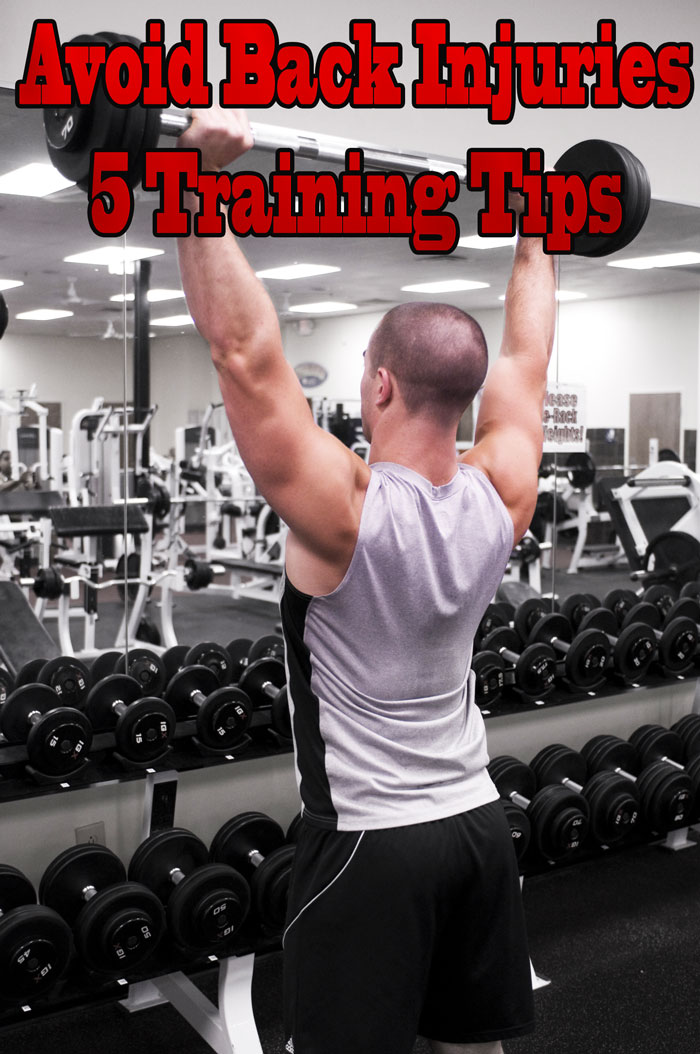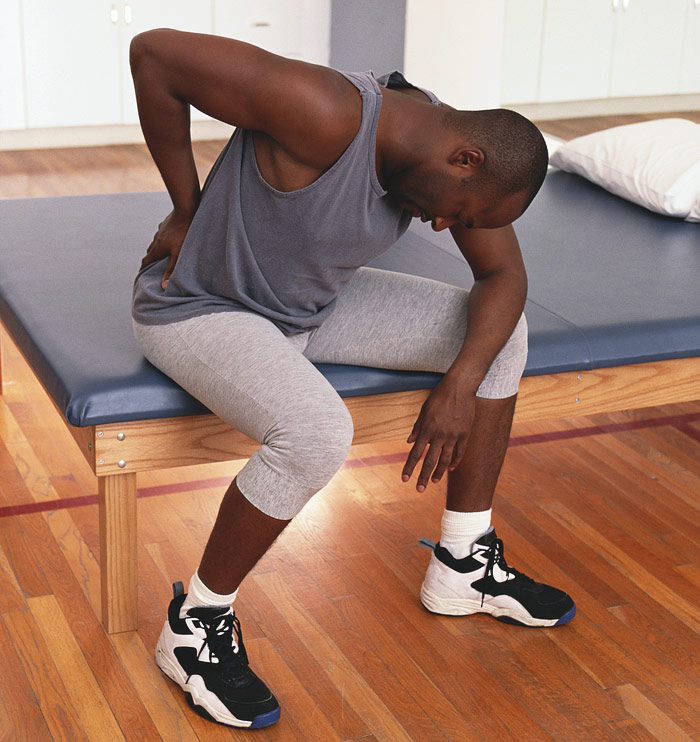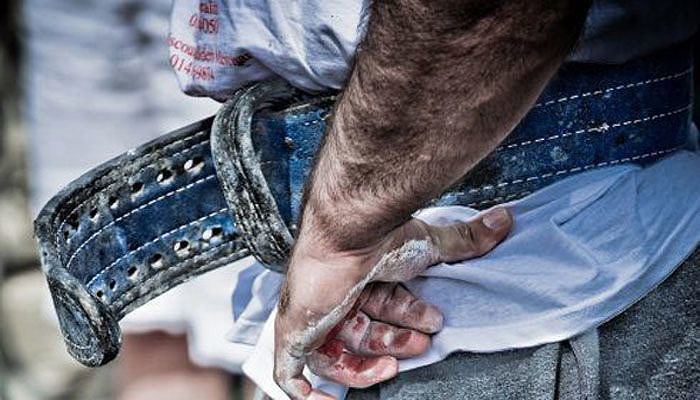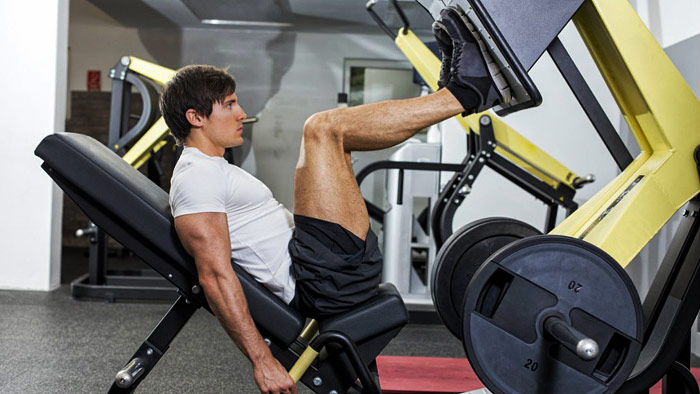
Back injuries are something every serious trainer should always be conscious of. Here are 5 top tips for ensuring a healthy back!
If you think you have a healthy back and don’t have to worry about future back injuries, think again. Back injuries can happen when you least expect them. If you’ve never experienced nerve and disc issues in your back you are going to want to pay very close attention to this article. For those of you that have had back issues, we’re going to tell you how to avoid future injuries.
The first three times I injured my back I can honestly say I didn’t know any better. Despite training with great form and warming up before each workout, I still got injured. The last three times it was undeniably my fault because by that time I knew what I needed to do and I either wasn’t doing it or wasn’t doing it consistently. After this last injury three weeks ago I had a revelation.
Well, that’s what I am going to call it because having to crawl to the toilet before you shit yourself and then getting stuck on the toilet for almost three hours because of back spasms just isn’t something I want to explain to you all. The point is, I had enough and swore to myself that I would never go through that again.
My first three back injuries came as a result of tucking my hips and tilting my posterior. Twice it occurred while putting a t-bar down after a set and once while going too deep on hack squats with tight hams and lower back. The hips came forward and “pop”. Two of the last three injuries happened while I was leg pressing. I rolled my hips just enough and “pop”.

The last time? I sat down in a chair in a waiting room. No kidding. And this was the worst one! I couldn’t stand upright and could barely get to my truck to get home. The next morning was the aforementioned situation where I almost shit myself and then I stayed in bed for three days not eating or drinking anything because I was willing to shit the bed rather than crawl to the toilet again. It was during this time that I had a Percocet and Xanax epiphany. I promised myself that from now on I would consistently do anything and everything to keep my back healthy. I already had all of the tools as I had kept my back healthy for long periods of time prior to this last injury. Yes, the last three injuries seem like a lot but keep in mind that we’re talking about three injuries over about twelve or thirteen years. I was totally injury free for years until my bad habits caught up with me. Here are five points that I always keep in mind to ensure a healthy back:
A GOOD CHIROPRACTIC DOCTOR
This is by far the most important key to avoiding recurring back pain. I was fortunate enough to get a recommendation from my great doctor to see another great doctor here in Denver. When I’m seeing my chiro regularly and consistently, I have zero back issues and I feel great both in the gym and throughout the rest of the day.
USING A BELT
For years I advocated not using a belt and I’m sure many of you are quick to assume that not using one is what caused my back pain. For anyone that has no structural issues with their lower back, I still recommend not using a belt while training unless you are going for very low rep, strength-type sets in a powerlifting type of style or “max” sets. Otherwise, not using a belt will help to keep your core strong and fully develop those muscles.
If you have ever had back issues, I recommend using a belt in the gym for EVERYTHING you do! Literally everything from squats to side laterals to bench presses. Why? Belts not only provide support when performing an exercise but even in between sets when you are picking up plates and loading up a bar on the bench press. They also keep your midsection warm and that’s a very important factor in keeping your back healthy and injury free. When you take off your belt it should be warm and moist from working your ass off.
STRETCHING
I can’t lie, I hate stretching. The thing is, it does help keep you loose and your lower back healthy. So as much as it sucks, it needs to be done. Stretching the hip flexors, glutes, hamstrings and erectors during warm up sets is the way to go. This will have you stretching warm muscles that have blood in them and that is the safest way to stretch. Stretching can decrease or even eliminate minor pain in the lower back while warming up. I’ve had leg sessions that I didn’t think I’d be able to get through due to lower back pain only to have the pain vanish after only a few stretches.
WEIGHT CONTROL
I’m not talking about the weight on the bar but rather YOUR body weight. My first two injuries were weight related in that when I put the t-bar down after my set, my round stomach leveraged my lower back and helped to cause the injury. The bigger your gut, the bigger your chance of injuring your lower back. In my particular situation, if I stay below a weight of 220 pounds the likelihood of injuring my back drops considerably.
EXERCISE SELECTION
Everyone wants to lift big and everyone wants to do the big exercises like squats and deads, etc. However, there comes a point where you have to balance out what you WANT to do with what is LOGICAL for your situation.

It might be wise to admit that doing squats is just too much of a gamble and if you switch to presses you won’t be risking an injury and layoff from training. I mean, what is more effective for leg growth: leg presses without any time off for injuries or squatting with time off for injuries every three months? Please understand that there are many people that develop big legs and backs without squatting or deadlifting. In fact, there are many pros that don’t do deads or squats at all! There are even more that used to do them but have stopped due to the risk of injury.
When push comes to shove, your body only allows for so much. Everybody wants to keep training heavy and performing all of the big exercises, but if you’re in this sport for the long haul, you will eventually need to rethink your long-term strategy.





Leave a Reply